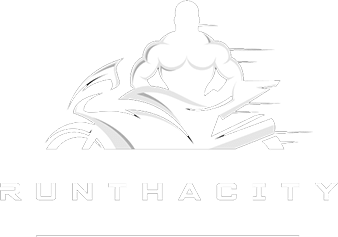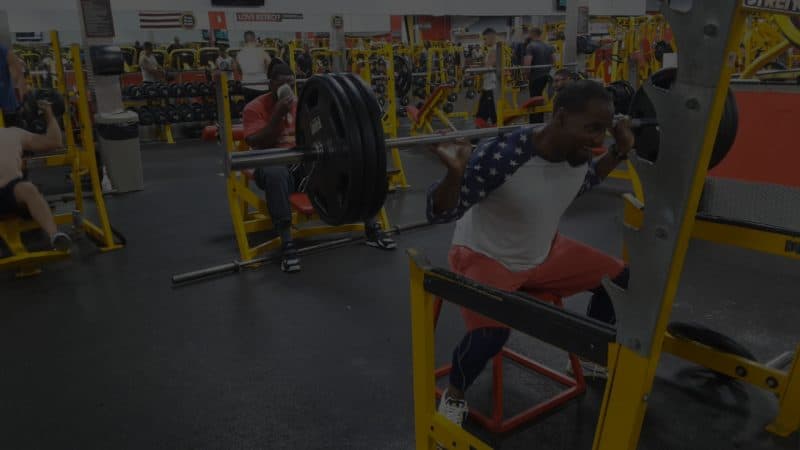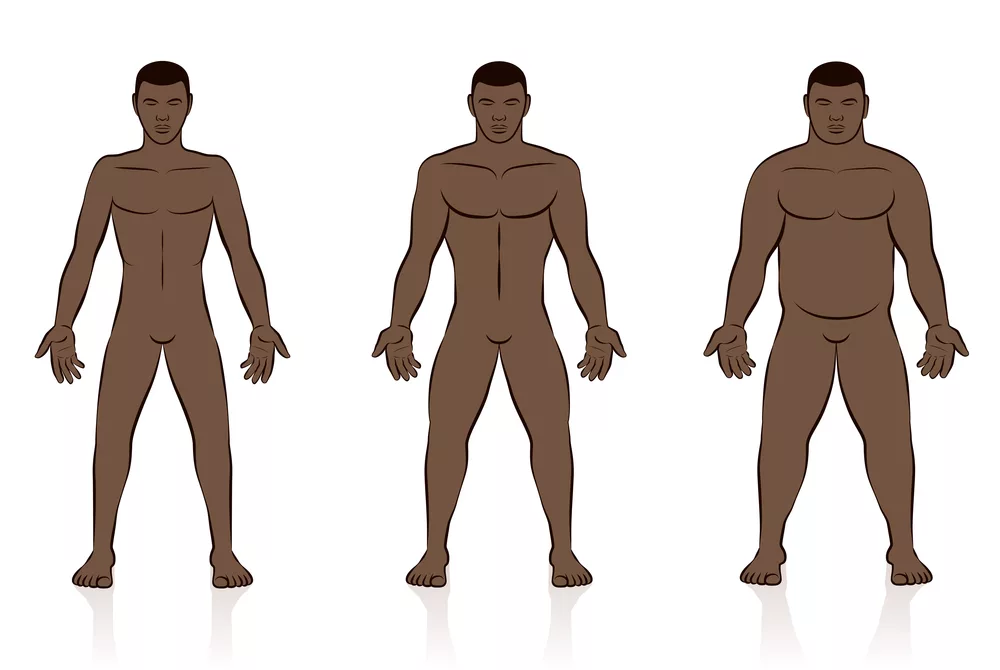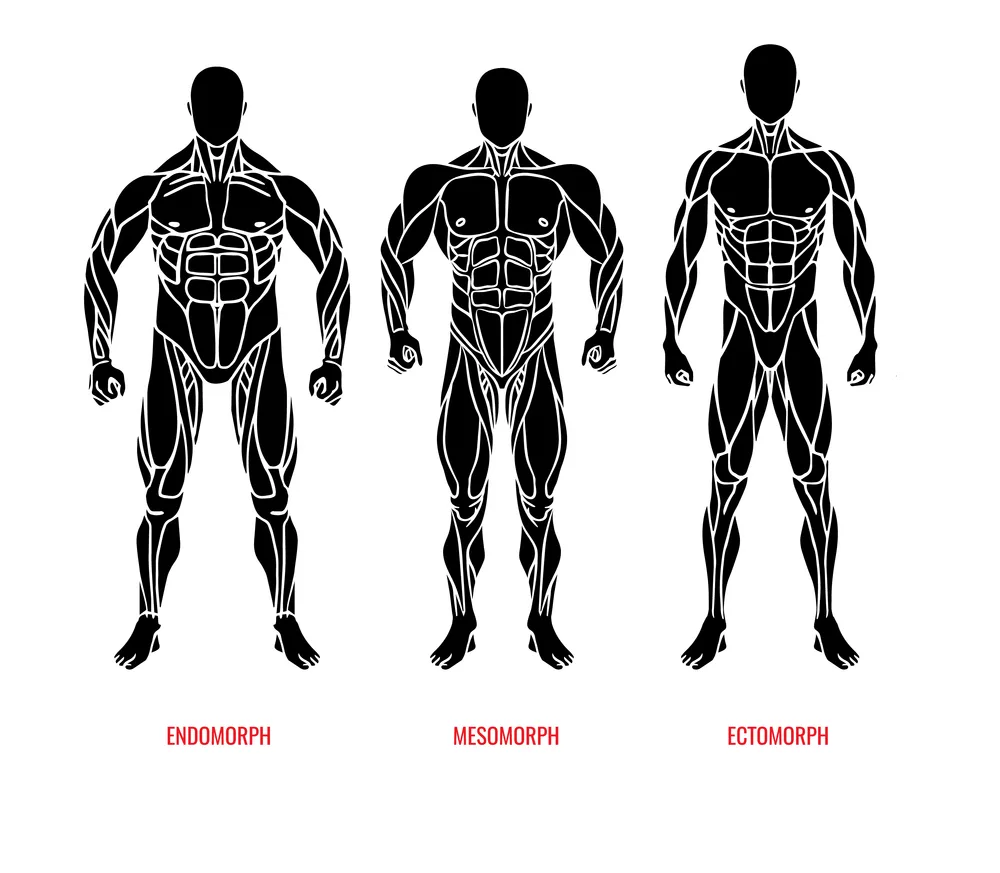There is only one magic formula to gaining weight and it requires that you eat more calories than your body burns. If you are finding it difficult to gain weight despite the fact you think you eat a lot, it is possible you are not creating a calorie surplus. If you are struggling to gain weight, these tips can help you understand what may be happening.
Why You’re Not Gaining Weight
If you are naturally skinny, you may think you can eat anything you want without gaining. You may claim you have a fast metabolism or that you simply don’t digest food the way heavier people do. You may believe you are constantly stressed which can lead to weight loss or that there is some medical condition that leads you to stay thin. However, there is truly only one explanation for staying thin and that is that you aren’t eating as much as you think you are. Track your calories for one week using an app like MyFitnessPal or something similar. It is highly likely you will find that you are not gaining weight because you are eating fewer calories than you are burning.
Somatotypes: Is Your Body Type Important
Your body type does play a part in how easily you gain or lose weight. People with high metabolisms do exist and it is possible you are not gaining because you are very active. Many people who have difficulty gaining fidget more than those who do not, research indicates. If you have a small frame, you may still have difficulty gaining because your body is not built to be big. Even if you have a small frame, have difficulty gaining due to activity or your metabolism is higher than others, if you eat more calories than you burn, you will gain weight. The key is to eat more calories than you burn consistently in order to see results.
How to Gain Weight
There are several ways to increase your calorie intake in order to gain weight. You can add more calories to each meal or add additional meals. Add calorie-dense food to your diet such as dried fruits, nuts or pasta. Blended food digests easier than food you have to chew, so add smoothies to your diet. One of the best smoothies includes oats, milk, banana, peanut butter and whey protein. Just as overweight people underestimate what they eat, skinny people overestimate what they eat. Track your calories each day to see what you are consuming. Consider a fitness tracker, such as a FitBit or Garmin, to track both calories and activity each day. Add squats and deadlifts with free weights to your workout to help you gain.
- Eat More
- Eat More Meals
- Eat Calorie Dense Foods
- Eat More Protein
- Drink Shakes
- Track Your Calories
- Lift Heavy (But Safely)
- Be Consistent
The Importance of Nutrition
Eating more calories than you burn will help you gain weight, but not just any calories. You want to be sure to choose healthy options, like whole grains as well as lean meats and dairy. Start by adding 500 calories per day than you are burning. If you are not gaining as you’d like, add more calories, but do so slowly to avoid building belly fat. You need to be consistent as it is the daily average calorie intake that determines true weight gain.
You Need to Eat More Protein
Increase the amount of protein you eat each day, such as chicken, fish and eggs. Add 1 gram of protein per pound of body-weight per day to build muscle and for recovery. Some of the best protein options include steaks, ground round, chicken breasts and thighs as well as tuna, salmon, mackerel and sardines. Eggs are good source of protein as are dairy products like milk, cottage cheese and yogurt.
Top Protein Sources:
- Steaks, Ground Beef
- Chicken Breast
- Turkey Breast
- Ground Turkey
- Tuna
- Salmon
- Mackerel
- Eggs or Egg Whites
Eat More Meals Throughout the Day
Small meals are easier to manage than large meals, so aim for six to seven small meals per day rather than three. Start by waking up earlier and eating breakfast. Too often, skinny people eat nothing for breakfast which means they are getting no calories before noon. You need at least eight hours sleep, so that leaves you only 16 hours to eat each day. Start with breakfast around 7 AM, adding a snack 10 AM. Lunch should be around 1 PM, another snack around 4 PM and then dinner around 7 PM. Keep in mind these are not large, more than 1,000 calorie meals, but smaller meals that are between 500 and 700 calories.
What You Should Eat
Choose foods that are high in calories and nutrition. Although vegetables are healthy, they do not have many calories. Keep vegetables in your diet for their nutritional value and fat-burning properties, but if you want to gain weight, you also need to add foods like nuts, dried fruit, dairy, grains, potatoes, fats and meat. Try to avoid junk food even though it is high in calories. McDonald’s food is calorie-dense, but also contains significant amounts of fat, sugar and sodium. Although eating chips, cookies, fries and ice cream may add calories, it can lead to extra fat around your belly. That does not mean you can never eat at McDonald’s or enjoy a cold beer every now and then. The best rule of thumb is 90 percent quality food and 10 percent junk food.
Train Consistently
Lifting helps trigger muscle mass building in your body so you want to include lifting weights in your workout. Lifting also increases your appetite helping you to eat more. If you eat more than you burn, lifting keeps food from being stored as fat. Use free weights which are more effective and safer than machines. Include compound exercises like squats, deadlifts, bench press and rows. Always try to lift more than you did in your last workout and be sure your form is correct. Your body needs rest, so don’t do more than three full body workouts each week.
Supplements for the Skinny Guy
Blending food in liquid form helps you digest it more quickly. You can make your own weight gainer shakes by combining:
- 100g Oats
- 1 Banana
- 1 tbsp Peanut Butter
- 300ml Whole Milk
- 2 scoops Whey Protein
Mix everything in a blender for 1048 calories, 120g carbs, 80g protein and 28g fat. Avoid processed weight gainer shakes as they are often full of sugars. If you aren’t a fan of smoothies, simply drink whole milk.
These tips and suggestions are designed for people who have difficulty gaining weight when working out. For more tips on workouts, nutrition and weight, subscribe to my YouTube Channel.
You Might also like
-
How To Improve Your Squat With Box Squats
Squats are an important part of any workout, not only building leg muscles but also quadriceps, hamstrings and calves. They also provide an anabolic aspect to your workout, improving overall muscle building.
If you have realized how important squats are in your workout, you may be surprised to learn that adding box squats can not only bring added benefits to your workout routine but it could also improve your squatting technique overall.
-
Mastering the Ride: How to Prevent and Treat Common Sportbike Injuries
The exhilarating rush of leaning into a corner, the wind whipping through your hair, and the undeniable thrill of commanding a powerful machine – these are just a few of the reasons why sportbikes hold such a special place in the hearts of many riders. However, with the incredible performance and sharp handling of these motorcycles comes a heightened degree of risk for injuries.
This article delves into the world of sportbike injuries, equipping you with the knowledge and practical steps to navigate the journey safely. We’ll explore the most common injuries associated with sportbike riding, delve into preventative strategies, and shed light on treatment options. By understanding the risks and taking necessary precautions, you can continue to enjoy the thrill of the ride while minimizing the chances of encountering these injuries.
Key Takeaways:
- Common sportbike injuries include wrist/hand, shoulder, neck/back, and leg/foot injuries.
- Prevent injuries through proper gear, ergonomic bike setup, strengthening exercises, and safe riding practices.
- Seek immediate medical attention for any suspected injury.
- Treatment options include rest, pain management, physical therapy, and surgery (if needed).
- Prioritize safety by learning continuously, maintaining your bike, and riding with responsible individuals.
Comparison Table: Common Sportbike Injuries vs. Preventative Measures
Injury Preventative Measures Wrist and Hand Sprains/Fractures Wear protective gloves, maintain proper grip on handlebars, avoid over-torquing controls. Shoulder Strains/Dislocations Strengthen core and shoulders, maintain upright posture, avoid locking elbows. Neck and Back Pain/Herniated Discs Maintain neutral posture, avoid hunching, strengthen core muscles, take regular breaks on long rides. Leg and Foot Sprains/Fractures Wear sturdy motorcycle boots, maintain proper footpeg placement, avoid excessive shifting or braking. Comparison Table: Common Sportbike Injuries vs. Preventative Measures
The Landscape of Sportbike Injuries: Understanding Common Risks
The unique design and riding style of sportbikes expose riders to specific physical demands and potential hazards. Let’s delve into the most prevalent forms of injuries encountered by sportbike enthusiasts:
1. Upper Body Injuries:
-
Wrist and Hand: The aggressive riding position, coupled with the potential for falls, makes these areas particularly vulnerable. Common injuries include sprains, fractures, and carpal tunnel syndrome, caused by repetitive strain on the nerves and tendons.
-
Shoulder: Similar to wrist and hand injuries, the shoulders bear the brunt of the forward-leaning posture and potential impact in a fall. Dislocations, strains, and rotator cuff injuries are common occurrences.
-
Neck and Back: Long rides with a hunched posture can put immense strain on these areas, leading to pain, stiffness, and even herniated discs. Improper core engagement further exacerbates the situation.
2. Lower Body Injuries:
- Leg and Foot: While less frequent than upper body injuries, leg and foot injuries can happen in accidents or due to repetitive motions while shifting and braking. These can include ankle sprains, fractures, and nerve damage, causing pain and limiting mobility.
3. Additional Injuries:
- Head Injuries: Although mitigated by wearing a helmet, head injuries can still occur in severe accidents, highlighting the importance of choosing and using a DOT-approved helmet consistently.
4. Psychological Trauma:
- Accidents, even minor ones, can cause emotional distress and even post-traumatic stress disorder (PTSD) in some individuals. Seeking professional help is crucial if you experience emotional difficulties after an accident.
Safeguarding the Ride: Proven Strategies for Injury Prevention
Knowing the risks is essential, but the true power lies in taking proactive steps to prevent them. Here are some key strategies you can implement:
1. Gear Up for Protection:
- Helmet: Invest in a high-quality, DOT-approved helmet that fits snugly but comfortably. Replace it every five years or after any significant impact.
- Protective Clothing: Opt for abrasion-resistant leather or heavy textile gear that covers your entire body. Leather offers superior protection but can be warmer in hot weather.
- Footwear: Wear sturdy motorcycle boots that provide ankle support and good grip on the footpegs.
2. Ergonomics Matter:
- Bike Fit: Ensure your bike is adjusted to your specific body measurements. This includes proper handlebar height, seat position, and footpeg placement. An ergonomically correct setup reduces strain on your body and allows for better control.
- Maintaining Posture: Maintain a neutral, upright posture while riding. Avoid hunching your back or locking your elbows, as this can lead to fatigue and increase the risk of injury.
3. Strengthen Your Body:
- Targeted Exercises: Regularly strengthening your core, back, and shoulders improves your riding posture and endurance. This enhances control and reduces the risk of fatigue-induced errors.
- Stretching: Don’t underestimate the power of stretching. Regularly stretching improves flexibility and range of motion, reducing the risk of strains and muscle fatigue.
4. Master Your Skills:
- Safety Courses: Enroll in a motorcycle safety course to learn proper braking, cornering, and maneuvering techniques. These courses hone your skills and equip you with the knowledge to handle challenging situations safely.
- Practice Makes Perfect: Regularly practicing in a controlled environment builds confidence and refines your skills, allowing you to react calmly and effectively in real-world situations.
5. Listen to Your Body and the Road:
- Fatigue Factor: Avoid riding when you’re tired or under the influence of alcohol or drugs. Fatigue impairs judgment and reflexes, significantly increasing the risk of accidents.
- Stay Alert: Be mindful of your surroundings and anticipate potential hazards. Watch out for other vehicles, road conditions, and weather changes.
- Take Breaks: Schedule regular breaks on long rides. Get off the bike, stretch your legs, and rehydrate to prevent fatigue and maintain focus.
Navigating Recovery: Treatment Options for Sportbike Injuries
Despite taking all necessary precautions, accidents can still occur. If you sustain an injury while riding, immediate medical attention is crucial. A qualified healthcare professional can accurately diagnose the severity of the injury and recommend the most appropriate treatment course.
Here’s a glimpse into some common treatment options for sportbike injuries:
1. Rest and Immobilization:
- Depending on the nature and severity of the injury, the doctor might recommend rest and immobilization. This allows your body time to heal and prevents further damage. Immobilization may involve casts, splints, or slings.
2. Pain Management:
- Managing pain is essential for promoting healing and comfort. This may involve medication like pain relievers, anti-inflammatory drugs, or muscle relaxants. Topical pain relief options like creams and gels may also be used.
3. Physical Therapy:
- Physical therapy plays a crucial role in regaining strength, flexibility, and range of motion after an injury. A physical therapist will create a personalized rehabilitation program that includes exercises and modalities like ultrasound or electrical stimulation to facilitate healing and recovery.
4. Surgery:
- In some cases, surgery might be necessary to repair fractures, torn ligaments, or other damage that cannot heal on its own. This is a complex decision, and the doctor will discuss the risks and benefits thoroughly with you before proceeding.
5. Emotional Support:
- Don’t underestimate the impact of emotional trauma after an accident. Consider seeking professional help from a therapist to address any anxiety, depression, or post-traumatic stress disorder (PTSD) that you might be experiencing.
Beyond the Finish Line: Embracing a Culture of Safety
Beyond the Finish Line: Embracing a Culture of Safety
The exhilarating world of sportbike riding demands a commitment to safety. By adopting the strategies outlined above, you minimize the risks associated with this exhilarating activity. Remember, the thrill of the ride is amplified when coupled with responsible and informed practices.
Here are some additional points to consider:
- Community Connection: Surround yourself with responsible riders who prioritize safety. Sharing experiences and learning from others can reinforce safe riding practices.
- Continuous Learning: Continuously educate yourself on safety advancements, proper riding techniques, and hazard avoidance strategies.
- Regular Maintenance: Ensure your bike is in proper working order. Regular maintenance checks and addressing any potential issues before hitting the road are crucial for safety.
Riding a sportbike is an activity that requires a balance of skill, awareness, and responsibility. By understanding the potential risks, implementing preventive measures, and seeking professional help when necessary, you can maximize your enjoyment on two wheels while prioritizing the most important aspect – your safety. Remember, the journey is just as important as the destination, and safe riding practices ensure that you can continue to enjoy the thrill of riding for years to come.
6 FAQs: Gearing Up for Safe Sportbike Riding
-
What type of helmet should I wear?
- Always wear a DOT-approved helmet that fits snugly but comfortably. Replace it every five years or after any significant impact.
-
Is leather gear always necessary?
- While leather offers superior abrasion resistance, heavy textiles can also provide adequate protection. Choose gear that fits well and offers sufficient coverage.
-
How often should I stretch before and after riding?
- Perform dynamic stretches before riding to warm up your muscles and static stretches after riding to improve flexibility and prevent stiffness.
-
Can I skip safety courses if I’m an experienced rider?
- Safety courses are valuable for all riders, regardless of experience level. They can help you refine your skills, learn new techniques, and refresh your knowledge on safe riding practices.
-
How long should I rest after a minor injury?
- Follow your doctor’s instructions regarding rest and activity limitations. Ignoring this advice can hinder healing and increase the risk of complications.
-
When should I seek professional help for emotional trauma after an accident?
- If you experience any emotional distress, anxiety, depression, or difficulty coping after an accident, don’t hesitate to seek professional help from a therapist.
-
Ectomorph, Mesomorph, & Endomorph: Beginners Guide To Body Types
Have you ever wondered why some people seem to gain muscle easily, while others struggle to lose weight no matter how much they exercise? The answer may lie in their body type. There are three main body types: ectomorphs, mesomorphs, and endomorphs. In this beginner’s guide, we’ll explore each body type, their characteristics, and the best exercises and diets for each one.
What Is An Ectomorph Body Type?
Ectomorphs are often referred to as “hardgainers” because they tend to have a harder time gaining weight and muscle mass compared to the other body types. They typically have a slim build, with narrow hips and shoulders, and a fast metabolism. Ectomorphs often have long limbs, a thin waist, and a small bone structure.
Characteristics of Ectomorphs:
- Difficulty gaining weight and muscle mass
- Fast metabolism
- Slim and narrow build
- Small bone structure
- Long limbs and thin waist
- Low body fat percentage
- Can appear “wiry” or “stringy”
Best Exercises for Ectomorphs: Ectomorphs should focus on exercises that promote muscle growth and weight gain. Compound exercises that work multiple muscle groups at once, such as squats, deadlifts, and bench presses, are ideal for ectomorphs. They should also incorporate high-intensity training and progressive overload into their workouts to stimulate muscle growth.
Here are some of the best exercises for ectomorphs:
- Compound Exercises: Compound exercises are exercises that work multiple muscle groups at once. These types of exercises are ideal for ectomorphs because they promote muscle growth and help to build overall strength. Examples of compound exercises include squats, deadlifts, bench presses, pull-ups, and rows.
- Heavy Weightlifting: Ectomorphs should aim to lift heavy weights with low to moderate repetitions to stimulate muscle growth. Lifting heavy weights will help to build muscle mass and strength, and it will also help to increase bone density.
- High-Intensity Training: High-intensity training, such as sprinting, HIIT, or circuit training, is also ideal for ectomorphs. This type of training can help to stimulate muscle growth and increase endurance.
- Progressive Overload: Ectomorphs should focus on progressive overload, which means gradually increasing the weight, reps, or sets over time. This will help to challenge the muscles and promote muscle growth.
- Rest and Recovery: Rest and recovery are also important for ectomorphs. They should aim to get enough sleep and rest days to allow their muscles to recover and grow. Overtraining can be counterproductive and hinder muscle growth.
Overall, ectomorphs should focus on exercises that promote muscle growth and build overall strength. A combination of compound exercises, heavy weightlifting, high-intensity training, progressive overload, and rest and recovery will help ectomorphs to achieve their fitness goals.
Diet Recommendations for Ectomorphs: To gain weight and muscle mass, ectomorphs need to consume more calories than they burn. Ectomorphs should focus on consuming nutrient-dense foods, such as lean proteins, whole grains, and healthy fats. They should also aim to consume a high amount of protein to support muscle growth. Ectomorphs may also benefit from consuming calorie-dense foods, such as nuts, avocados, and dried fruits, to increase their calorie intake.
Diet plays a crucial role in achieving fitness goals, especially for ectomorphs who struggle to gain weight and muscle mass. A proper diet will provide the necessary nutrients for muscle growth and will prevent the body from burning muscle for energy. Here are some diet recommendations for ectomorphs:
- Calorie Surplus: Ectomorphs should aim to consume more calories than they burn to gain weight and build muscle. It’s recommended that ectomorphs consume 500-1000 calories above their maintenance level to achieve a calorie surplus. This surplus can be achieved by adding calorie-dense foods to their diet, such as nuts, avocados, and whole grains.
- Protein Intake: Protein is essential for muscle growth, and ectomorphs should aim to consume 1.5-2 grams of protein per kilogram of body weight. This means that a 70 kg (154 lb) ectomorph should aim to consume 105-140 grams of protein per day. Good sources of protein include lean meats, poultry, fish, eggs, dairy products, legumes, and soy products.
- Carbohydrate Intake: Carbohydrates provide energy for the body, and ectomorphs should aim to consume complex carbohydrates, such as whole grains, fruits, and vegetables. These foods will provide a sustained release of energy and prevent the body from burning muscle for energy.
- Healthy Fats: Ectomorphs should also include healthy fats in their diet, such as omega-3 fatty acids found in fish, nuts, and seeds. Healthy fats are essential for hormone production and overall health.
- Meal Frequency: Ectomorphs should aim to eat 5-6 small meals throughout the day to provide a constant supply of nutrients for muscle growth. This will prevent the body from burning muscle for energy and will also prevent overeating.
Overall, ectomorphs should aim to consume a balanced diet that is high in protein, complex carbohydrates, and healthy fats. They should also consume more calories than they burn to achieve a calorie surplus for weight gain. A consistent diet combined with a proper exercise routine will help ectomorphs to achieve their fitness goals.
Overall, ectomorphs may have a harder time gaining weight and muscle mass compared to the other body types, but with a proper workout routine and diet, they can still achieve their fitness goals.
What is a Mesomorph?
Mesomorphs are often described as the “ideal” body type because they have a naturally athletic build and tend to gain muscle and lose fat relatively easily. They typically have a medium-sized bone structure, a wide shoulder-to-hip ratio, and well-defined muscles.
Characteristics of Mesomorphs:
- Naturally athletic build
- Medium-sized bone structure
- Wide shoulder-to-hip ratio
- Well-defined muscles
- Tendency to gain muscle and lose fat easily
- Efficient metabolism
Best Exercises for Mesomorphs: Mesomorphs excel in a variety of exercises, as their athletic build and efficient metabolism make it easier for them to build muscle and lose fat. They should focus on a balanced workout routine that includes both resistance training and cardiovascular exercises.
- Weightlifting: Mesomorphs tend to build muscle easily, so they should focus on weightlifting exercises that target specific muscle groups. Compound exercises like squats, deadlifts, bench presses, and pull-ups are also beneficial for muscle growth.
- Cardiovascular Exercises: Mesomorphs should also include cardiovascular exercises in their workout routine to maintain a healthy heart and promote fat loss. Running, cycling, swimming, and rowing are all great options.
- High-Intensity Interval Training (HIIT): HIIT workouts are also ideal for mesomorphs. HIIT workouts are short, intense bursts of exercise followed by a brief rest period. They help to increase metabolism, burn fat, and improve cardiovascular health.
Diet Recommendations for Mesomorphs: Mesomorphs tend to have a more efficient metabolism than other body types, which means they can consume more calories without gaining weight. However, it’s important for mesomorphs to maintain a balanced diet to support their fitness goals. They should focus on consuming a diet high in protein, complex carbohydrates, and healthy fats.
Overall, mesomorphs are naturally gifted with an athletic build and an efficient metabolism. To maintain their physique, they should focus on a balanced workout routine that includes both resistance training and cardiovascular exercises. Mesomorphs should also maintain a healthy diet to support their fitness goals.
What is an Endomorph Body Type?
Endomorphs are characterized by their curvy and rounded body structure, with a high body fat percentage and a slow metabolism. Endomorphs tend to have a softer and rounder appearance, with a wider waist, hips, and thighs. This body type has a tendency to gain weight easily and struggle to lose it, making weight management a major concern for endomorphs.
Endomorphs often have a greater appetite and may experience cravings for high-calorie foods, which can make it challenging to maintain a healthy diet. This body type also tends to have lower insulin sensitivity, which can lead to an increased risk of developing type 2 diabetes, high blood pressure, and heart disease.
To manage weight and promote overall health, endomorphs need to adopt a specific approach to training and nutrition. They may benefit from a higher protein and lower carbohydrate diet to promote satiety and reduce cravings. It’s also important for endomorphs to engage in regular exercise, including both cardiovascular and strength training, to increase their metabolism and build lean muscle mass.
Weight training is particularly important for endomorphs, as it helps to build lean muscle mass, which increases metabolism and burns more calories throughout the day. High-intensity interval training (HIIT) can also be effective for endomorphs, as it promotes fat burning and cardiovascular health.
It’s important to note that while endomorphs may face challenges in achieving their desired body composition, their body type also has its advantages. Endomorphs tend to have a higher level of strength and power due to their muscular build, which can be advantageous in certain sports and activities.
In summary, endomorphs are characterized by their curvy and rounded body structure, high body fat percentage, and slower metabolism. To manage weight and promote overall health, endomorphs need to adopt a specific approach to training and nutrition, including a higher protein diet and regular exercise that includes weight training and cardio.
Best Exercises for Endomorphs:
Endomorphs can benefit from a mix of cardiovascular and strength training exercises to promote weight loss, build lean muscle mass, and increase metabolism. Here are some exercises that endomorphs may find particularly beneficial:
- Resistance Training: Endomorphs should prioritize resistance training with weights, resistance bands, or bodyweight exercises. These exercises help build lean muscle mass, which increases metabolism and helps burn more calories throughout the day. Endomorphs can benefit from exercises such as squats, deadlifts, lunges, push-ups, pull-ups, and planks.
- High-Intensity Interval Training (HIIT): HIIT involves short, intense bursts of activity followed by periods of rest. This type of exercise can help endomorphs burn more calories and increase their metabolism. Examples of HIIT exercises include sprints, jumping jacks, and burpees.
- Cardiovascular Exercise: Endomorphs should include cardiovascular exercises such as running, cycling, or swimming to increase their heart rate and burn calories. Cardiovascular exercise can also improve heart health and overall fitness levels.
- Core Strengthening: Core strengthening exercises such as crunches, sit-ups, and planks can help endomorphs build a strong core, which can improve posture, balance, and stability.
- Yoga: Yoga can be an effective exercise for endomorphs, as it combines strength training, flexibility, and relaxation. Yoga can also help reduce stress and promote mental wellbeing.
It’s important for endomorphs to engage in a variety of exercises to avoid boredom and promote overall fitness. A combination of resistance training, HIIT, cardiovascular exercise, core strengthening, and yoga can provide a well-rounded fitness routine for endomorphs. However, it’s important to consult with a healthcare professional or certified personal trainer before starting a new exercise routine to ensure safety and effectiveness.
Diet Recommendations for Endomorphs:
Endomorphs tend to have a slower metabolism and a greater propensity for storing body fat, making it important to follow a healthy and balanced diet to support weight management and overall health. Here are some dietary recommendations for endomorphs:
- High Protein Intake: Endomorphs should aim to consume a diet that is high in protein to help promote satiety and build lean muscle mass. Good sources of protein include lean meats, poultry, fish, eggs, dairy, beans, and legumes.
- Low Carbohydrate Intake: Endomorphs may benefit from reducing their carbohydrate intake, particularly from refined carbohydrates such as white bread, pasta, and sugary snacks. Instead, focus on consuming complex carbohydrates such as fruits, vegetables, and whole grains.
- Fiber Intake: Endomorphs should consume a diet that is high in fiber, as this can help promote feelings of fullness and reduce cravings. Good sources of fiber include fruits, vegetables, whole grains, and legumes.
- Healthy Fats: Endomorphs should include healthy fats such as olive oil, avocado, nuts, and seeds in their diet. Healthy fats can help promote satiety and reduce inflammation in the body.
- Portion Control: Endomorphs should pay attention to portion sizes, as overeating can lead to weight gain. Consider using smaller plates and measuring portion sizes to help control calorie intake.
- Meal Timing: Endomorphs may benefit from consuming smaller, more frequent meals throughout the day to help regulate blood sugar levels and reduce cravings.
- Hydration: Endomorphs should drink plenty of water throughout the day to help support weight management and overall health.
It’s important for endomorphs to focus on consuming a balanced and healthy diet, while also considering their individual dietary needs and preferences. Consulting with a registered dietitian or healthcare professional can help endomorphs create a personalized and sustainable meal plan to support their health and fitness goals.
Embracing Your Unique Body Type: Why it Matters
Your body type is unique to you, and it plays an important role in your fitness journey. By understanding your body type and adopting the right approach to training and nutrition, you can optimize your fitness goals and achieve the results you desire. While it’s easy to get caught up in comparing yourself to others, it’s important to remember that everyone’s body is different, and there’s no one-size-fits-all approach to fitness.
Embracing your unique body type can help you achieve greater self-acceptance, confidence, and motivation in your fitness journey. Rather than trying to fit into a specific body type mold, focus on finding a training and nutrition plan that works best for your individual needs and preferences. This will not only help you achieve your fitness goals, but also promote long-term health and wellness.
Remember, your body type is just one aspect of your overall health, and it’s important to approach fitness with a holistic mindset. This means prioritizing your physical, mental, and emotional health, and focusing on creating sustainable lifestyle habits that support your overall wellbeing.
In conclusion, embracing your unique body type can help you achieve greater success and satisfaction in your fitness journey. By understanding and working with your body type, rather than against it, you can optimize your fitness results and improve your overall health and wellbeing.












